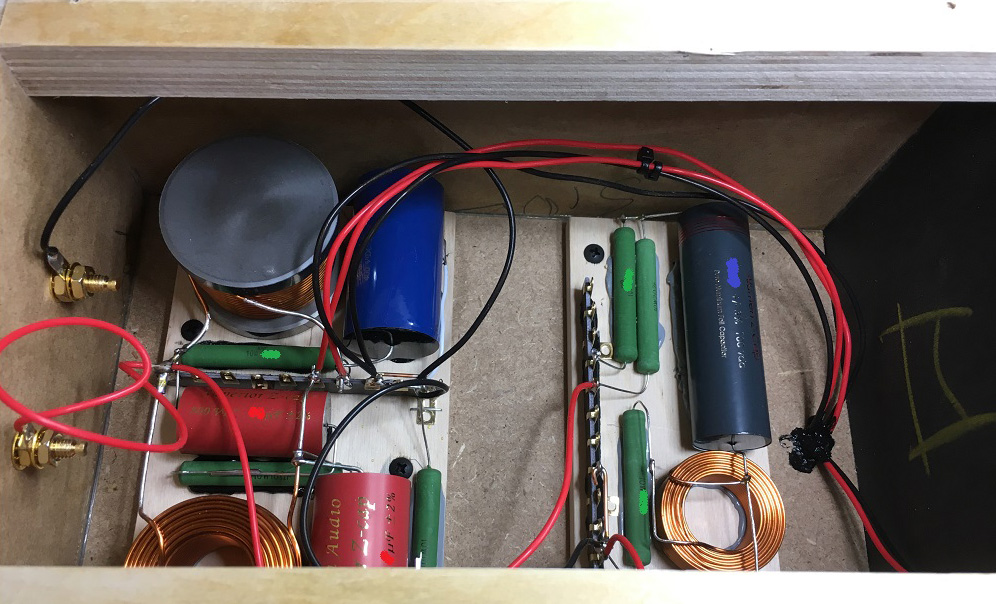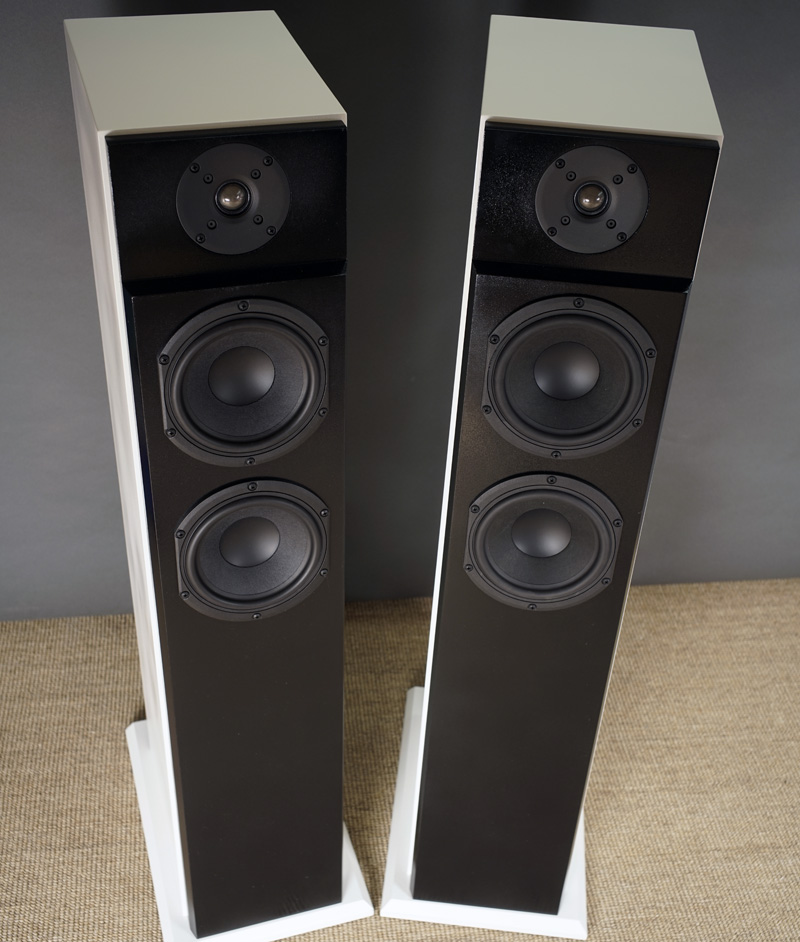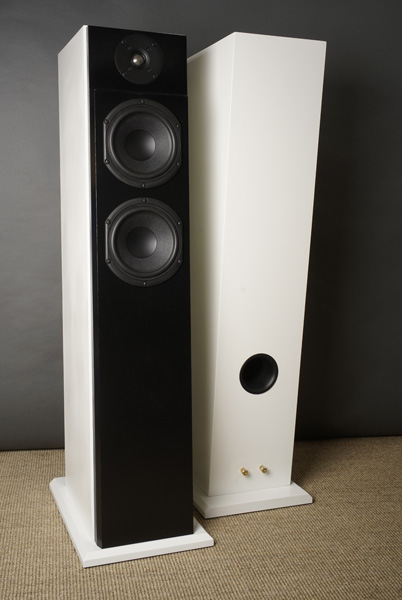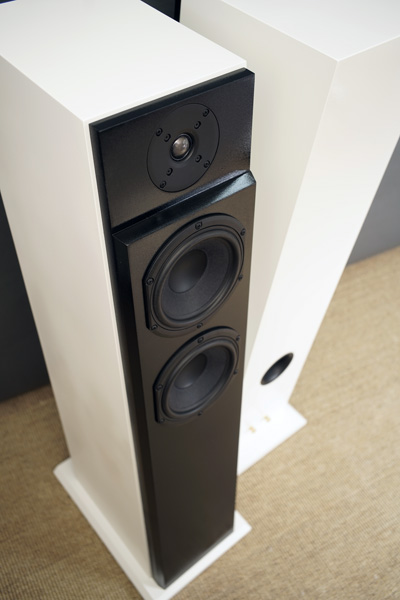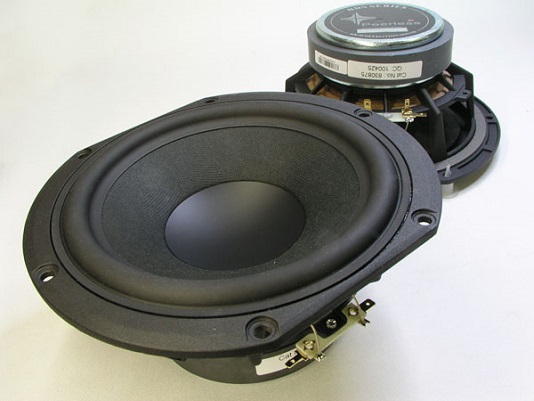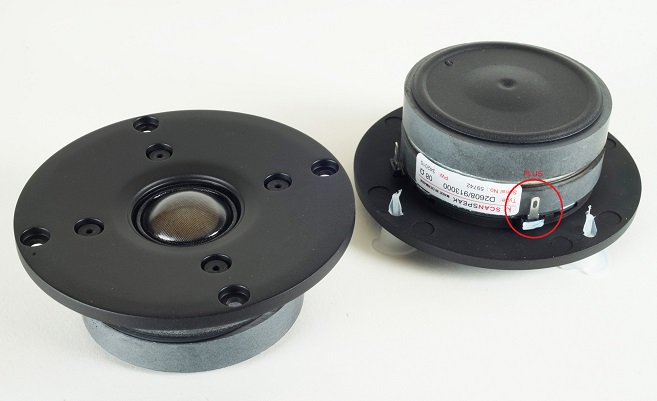DIY Loudspeakers: HOME INDEX UPDATES RESPONSE WHAT'S NEW
Nomex 164 mkII
Copyright 2022 © Troels Gravesen
Go to on this page:
DRIVERS
CROSSOVER
CABINET
MEASUREMENTS
SPEAKER-KIT
CROSSOVER LAYOUT
I've always liked these Peerless drivers with their paper pulp/Nomex cones, delivering a level of transparency that by far
supersedes the cost of the driver, and easily rivals similar products
costing 4 times as much. I recently bought two more units of this
P830875 driver and compared to two other units I bought some years ago -
and they're exactly the same, proving consistent availability of driver
parts from spiders to cones - and consistent production. It may be built by robots to keep cost
down, but who cares as long as build quality is impeccable?
The only rationale for keeping the ScanSpeak D2608/913000 tweeter in the
low-cost Discovery category is price. Quality wise it easily competes
with Revelator and Illuminator tweeters.
What I wanted from the mkII version was taking the point of crossover
down to a little below 2 kHz, where former version was above 3 kHz and left
some dispersion in upper mid/lower treble to be desired. In
addition to this, a time-aligned 2nd order LR2 crossover rather than former
4th order.
A lot of people have built the first NOMEX-164 version as we have
outstanding quality for a very low price and the objective here is to
deliver better and keep the price level. I have chosen the luxury to use
the best possible capacitor the tweeter - because it can handle the very best.
The only "problem" this tweeter has is its low price. Many people simply
won't believe it rivals the very best domes on the market. Hear some
cymbals from a 45 rpm vinyl - and from some very good amplifiers - and
hear for yourself.
Making the cabinets is easy, the crossover is simple. Amazing how good
sound we can get from a modest investment.
This speaker runs very well from my 32 wpc EAR-861 tube amp, transparent midrange, smooth treble. If we want the bottom octave, 20-40 Hz, add a subwoofer like the ScanSpeak 26W. The two 6" drivers have enough power in the important 80-160 Hz range to make a bigger system by adding subwoofer(s). I tried with a single subwoofer crossed at around 50-60 Hz, and it went well. But don't think the NOMEX drivers are bass-shy. What they can do, they do very well. The combined membrane area of the bass drivers equals a 9" bass driver.
Moving the speakers to my living room and setting up the speakers next to my reference ATS4-HE one might expect some serious shift in quality and some mental adjustment. Not al all! All I can say is that I fully understand why some people would question the rationale in investing some 10 times the money for the ATS4-HE drivers compared to NOMEX 164-mkII. Yes, we pay dearly for small increments in quality. No, the NOMEX does not have the low-end weight of the ATS, but nevertheless a solid bass presentation and magnificent midrange and treble. Feed them the best source material you have and they will deliver.
Basics:
2½-way speaker in a 40 litre vented cabinet.
System sensitivity: 90 dB/2.8V, 1 meter.
Impedance: 4 Ohms, minimum 3.2 Ohms @ 200 Hz.
Crossover: Low-order LR2 filter, 1.8 kHz.
Power requirement: 10+ wpc.
Useful links (Please
follow all links before e-mailing!):
http://www.troelsgravesen.dk/tips.htm
http://www.troelsgravesen.dk/tips.htm#CONSTRUCTION_OF_CROSSOVERS
http://www.troelsgravesen.dk/crossovers.htm
http://www.troelsgravesen.dk/LCR-RC.htm
http://www.troelsgravesen.dk/Inverted-Polarity.htm
http://www.troelsgravesen.dk/choices.htm
http://www.troelsgravesen.dk/power-handling.htm
Download specs here: HDS-P830875 D2608/913000
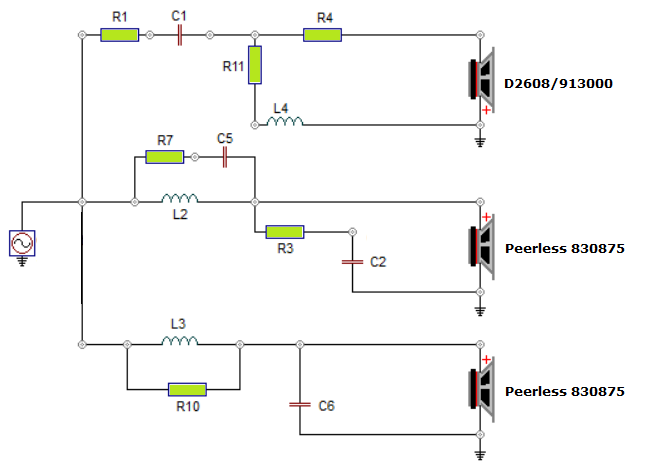
Nomex 164 mkII crossover topology.
The mkII follows a quite simple 2nd order topology.
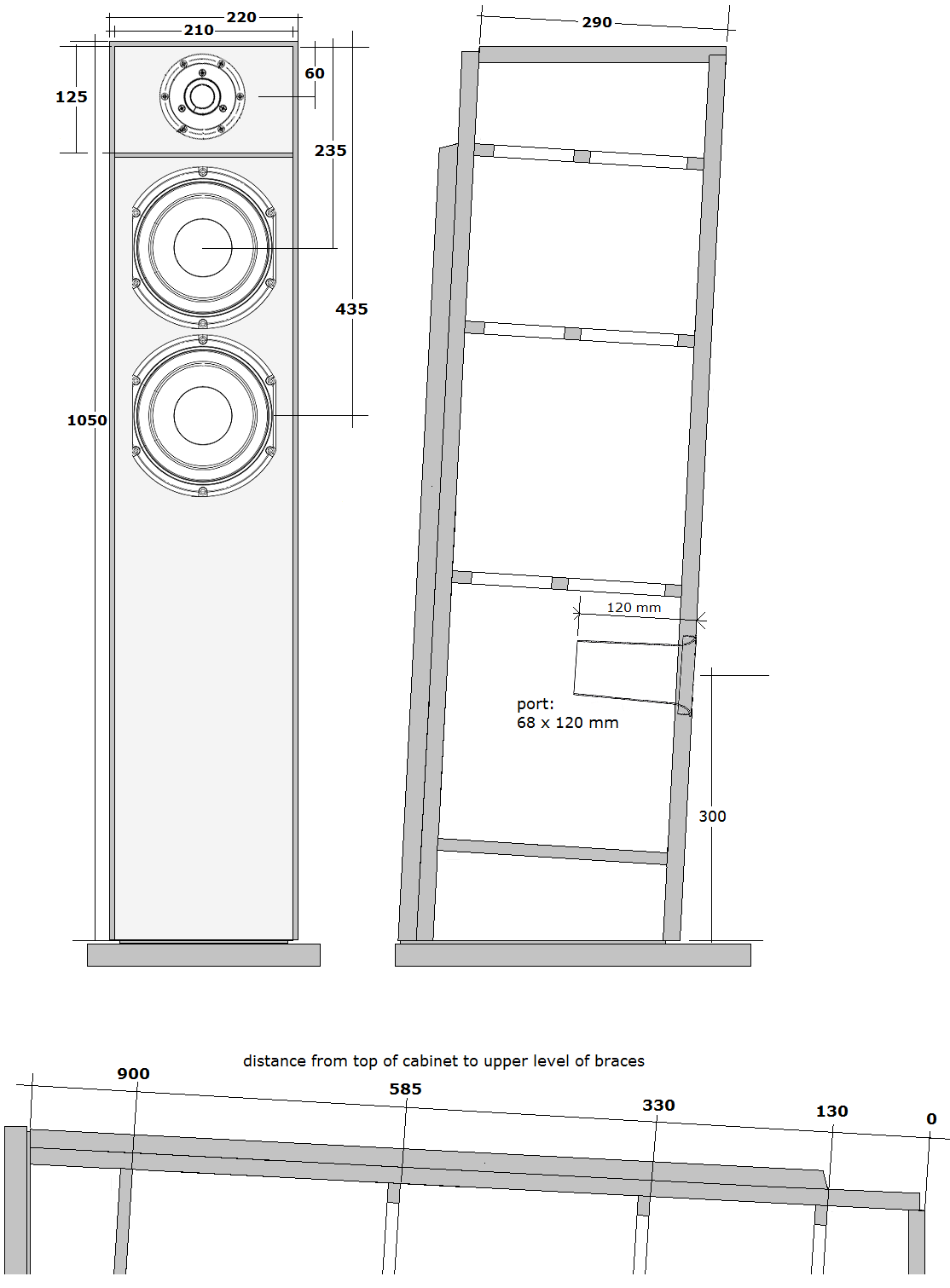
As always: Any change to front panel
design and drivers' placement and you need a
new crossover and I can't help.
Please read:
http://www.troelsgravesen.dk/crossovers.htm. And please, all of it
before writing.
I used 22 mm standard MDF for the basic cabinet and 2 x 19 mm for the
front panel. 15 mm for bracing.
Port length = 120 mm. http://www.troelsgravesen.dk/tips.htm#PORT_DIMENSIONS
Obviously you can make the cabinet 210 mm width and compensate the volume by increasing depth. You can also make the cabinets like a straight forward rectangular box and tilt the cabinets 5 deg. by adding out-riggers with various spike length like seen here. Nice looking solution!
Check out this file regarding construction tips:
http://www.troelsgravesen.dk/tips.htm
Workshop images
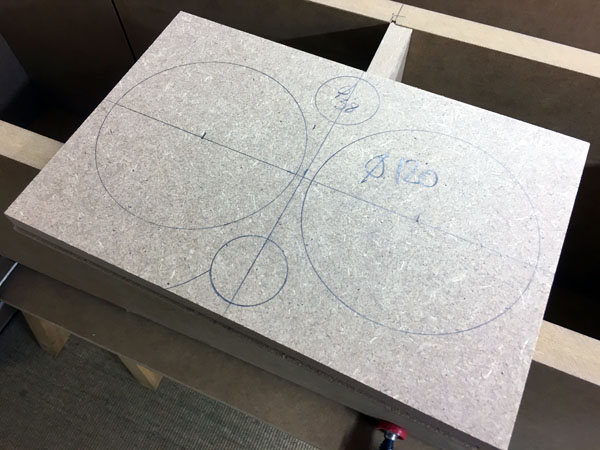
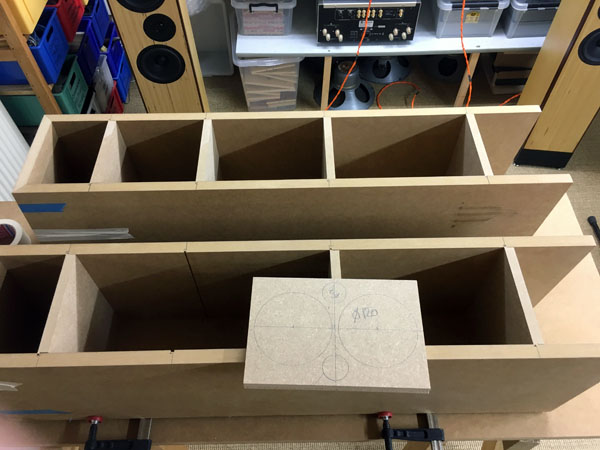
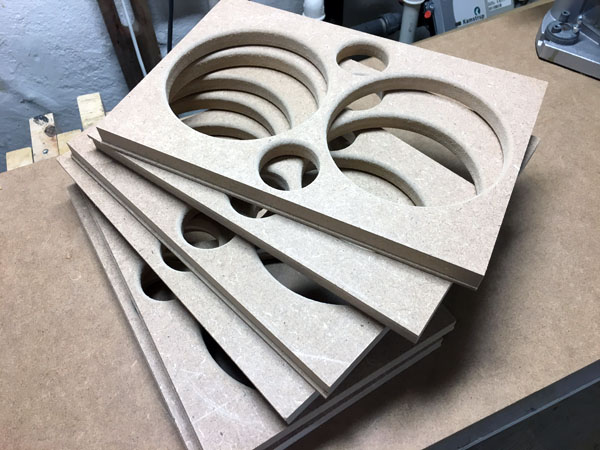
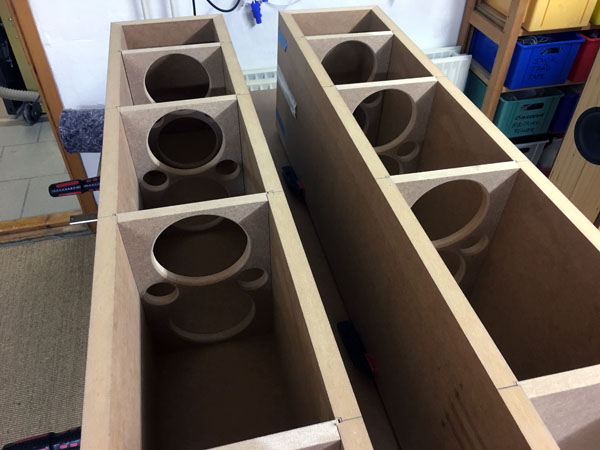
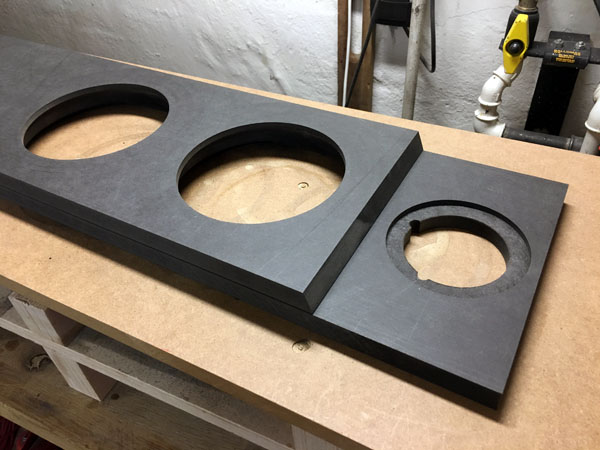
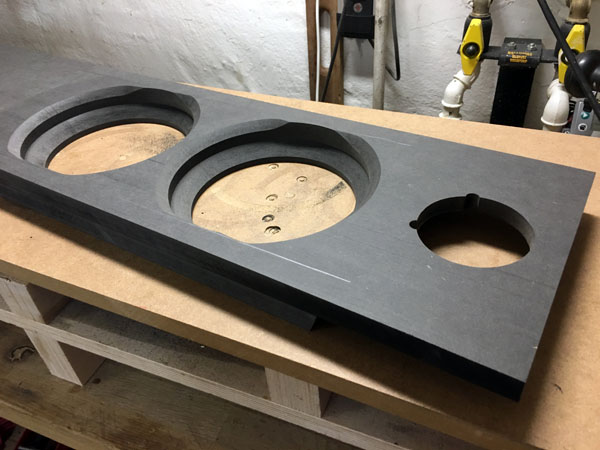
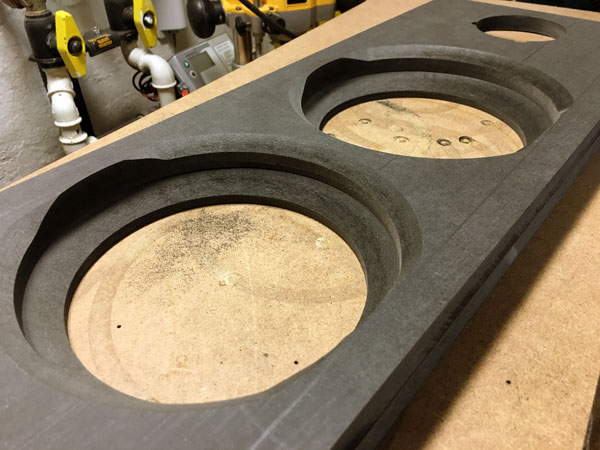
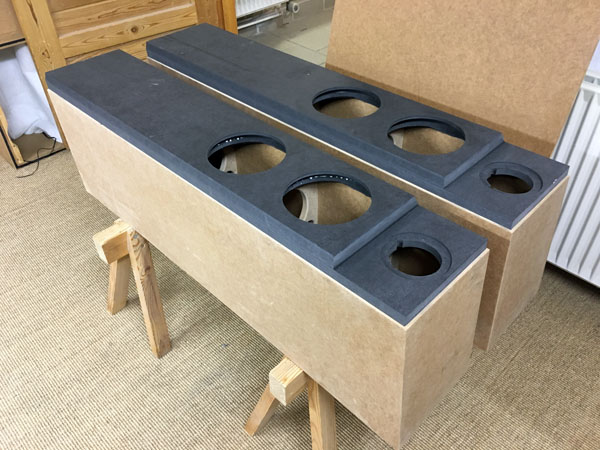
Do remember to chamfer the driver holes for
the midbass drivers!
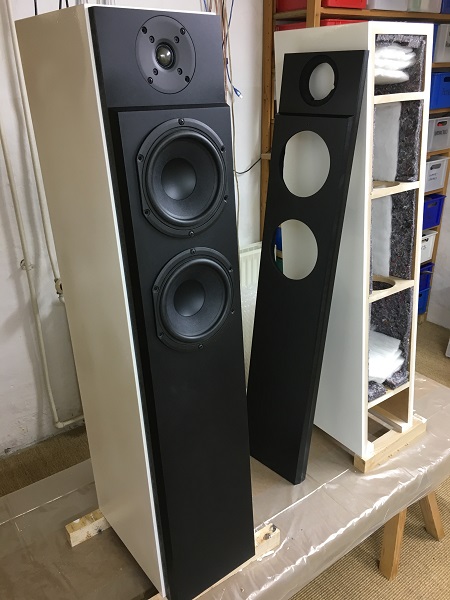
Shaping up!
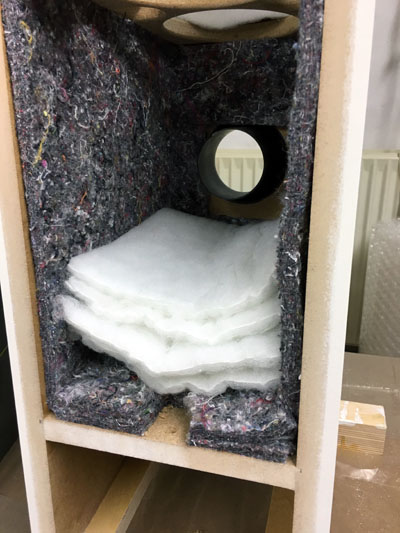
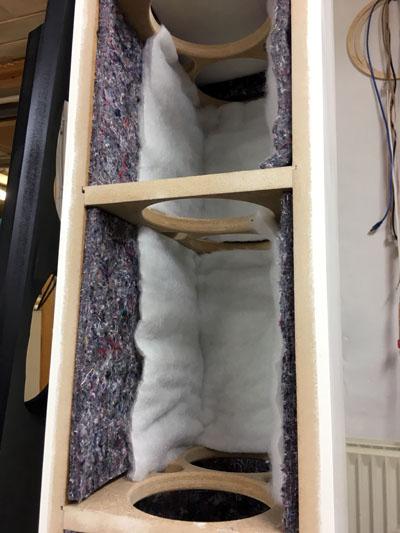
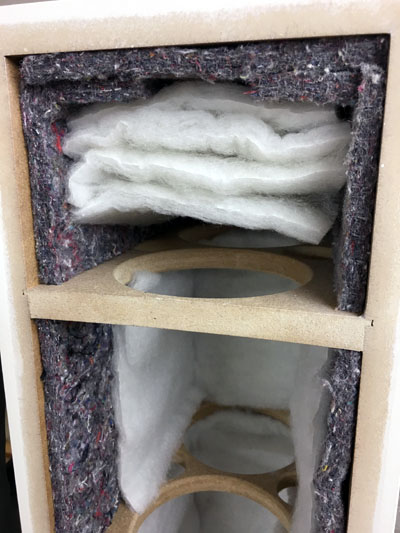
Cabinet damping
Add felt to all internal panels, except front panel. Add double layers at top and bottom.
Add 4 layers of acoustilux at bottom and top.
Ad 1 layer of acoustilux (19x 50 and 24 x 50 cm) behind bass drivers.
Everything that
can be counted does not necessarily count; everything that counts cannot
necessarily be counted". Albert
Einstein.
A few
comments on MEASUREMENTS before you start interpreting all the readings
below.
First of all, if we think measurements will tell us how a speaker
sounds, we're wrong. The perception of sound is way too subjective to be
reflected in any measurements we can perform. A loudspeaker system is
meant to give us a satisfying idea of an acoustic event and for some
people a pair of 5 USD ear-plugs are enough, others spend 200 kUSD on a
truly full-range pair of speakers - and the latter may not be happier
than the former.
Measurements may give us an idea of tonal balance of a system, i.e. too
much or too little energy in certain areas. Measurements may tell us
about bass extension if far-field measurements are merged with
near-field measurements. In addition to this, ports may contribute to
bass extension. Most of us diy'ers do not have access to an anechoic
room for full-range measurements from 20-20000 Hz.
What cannot be seen is what kind of bass performance we get in a given
room. Bass performance is highly dependent on in-room placement of your
speaker and the same speaker can be boomy in one place and lean in
another. Actual SPL level at 1 meter distance and 2.8V input is useful
for en estimate of system sensitivity and combined with the impedance
profile may give an idea of how powerful an amplifier is needed to drive
the speaker to adequate levels.
What measurements do not tell is the very sound of the speaker unless
displaying serious linear distortion. The level of transparency, the
ability to resolve micro-details, the "speed" of the bass, etc., cannot
be derived from these data. Distortion measurements rarely tell much
unless seriously bad, and most modern drivers display low distortion
within their specified operating range.
Many people put way too much into these graphs and my comments here are
only meant as warning against over-interpretation. There are more to
good sound than what can be extracted from a few graphs. Every graph
needs interpretation in terms of what it means sonically and how it
impacts our choice of mating drivers, cabinet and crossover design.
What measurements certainly do not tell is the sonic signature of the
speaker, because speaker cones made from polypropylene, aluminum,
Kevlar, paper, glass fiber, carbon fiber, magnesium, ceramics or even
diamonds all have their way of adding spices to the stew. Nor do
measurements tell what impact the quality of the crossover components
add to the sound, from state of the art components to the cheapest of
coils and caps, they all measure the same if values are correct.
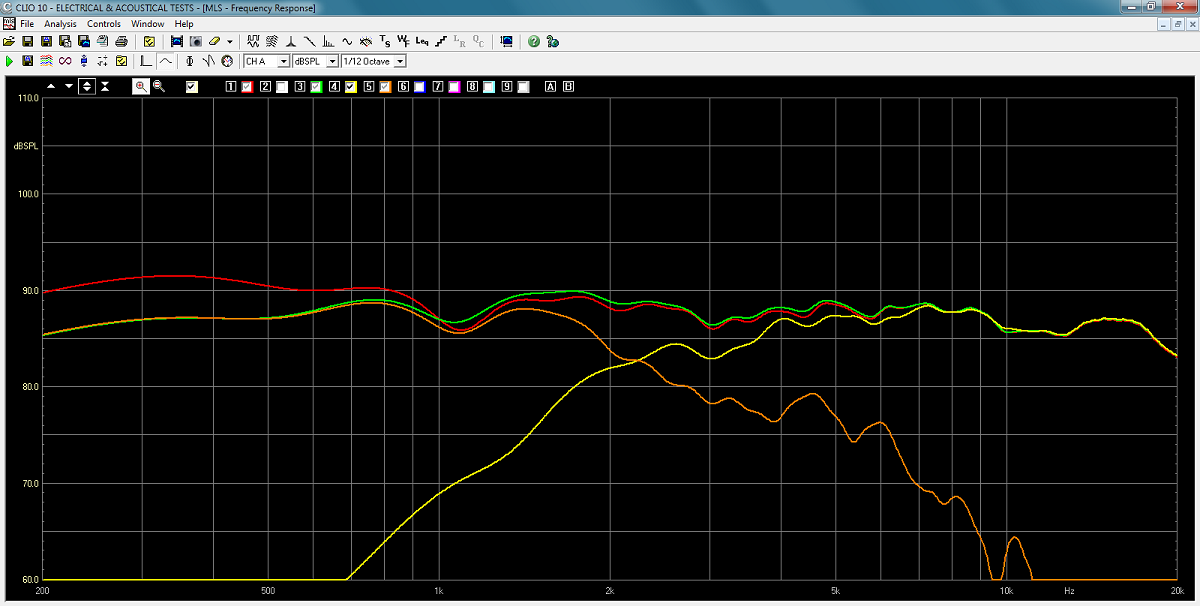
Individual response of drivers driven from crossover (orange, yellow)
and summed response (red) +/- lower bass (green).
Point of crossover around 2 kHz.
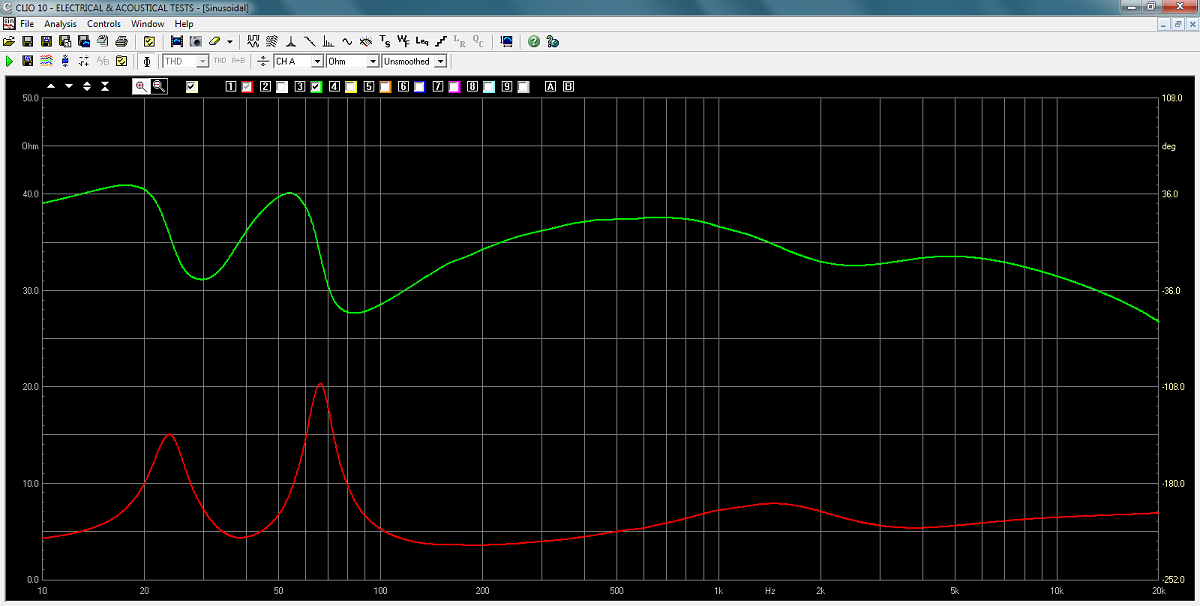
Final system impedance (red) and electrical phase (green).
Overall a very easy load making my 32 wpc EAR-861 tube amp very happy
driving the speakers from 8 Ohms tabs.
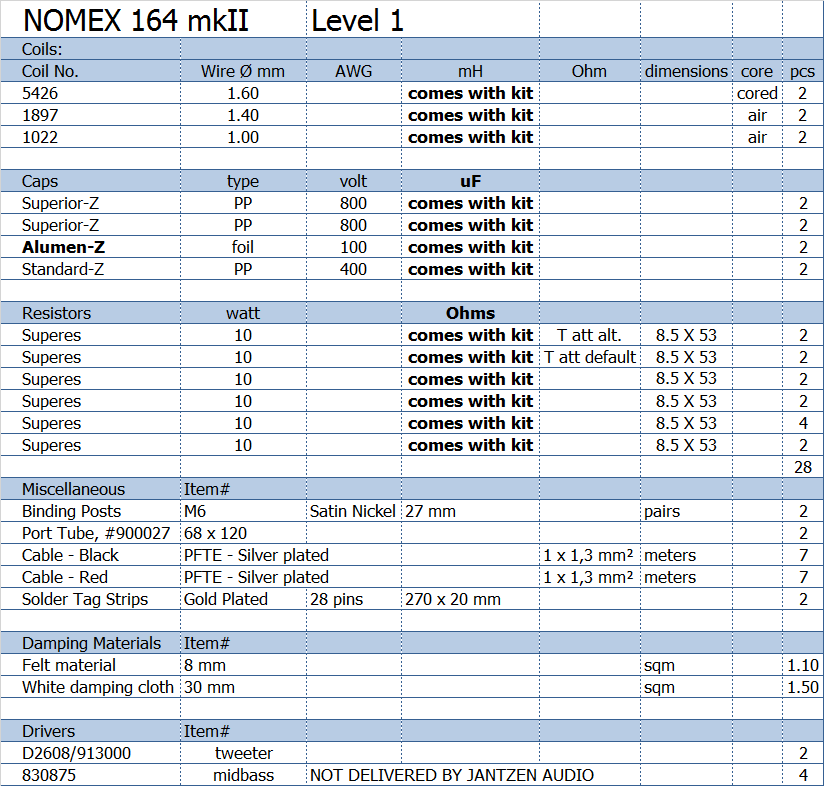
Level 2 has Superior-Z for tweeter rather
than Alumen-Z. This is the only difference.
All kit and component prices may be subject to
change and are always to be confirmed by Jantzen Audio Denmark.
Download Kit
Sale Presentations:

All technical questions to troels.gravesen@hotmail.com
All questions regarding purchase of kits, please mail Jantzen Audio at contact@jantzen-audio.com

Kit instruction with full schematics
CROSSOVER-LAYOUT
BACK TO INDEX
Check this out before start making crossovers:
http://www.troelsgravesen.dk/tips.htm#CONSTRUCTION_OF_CROSSOVERS
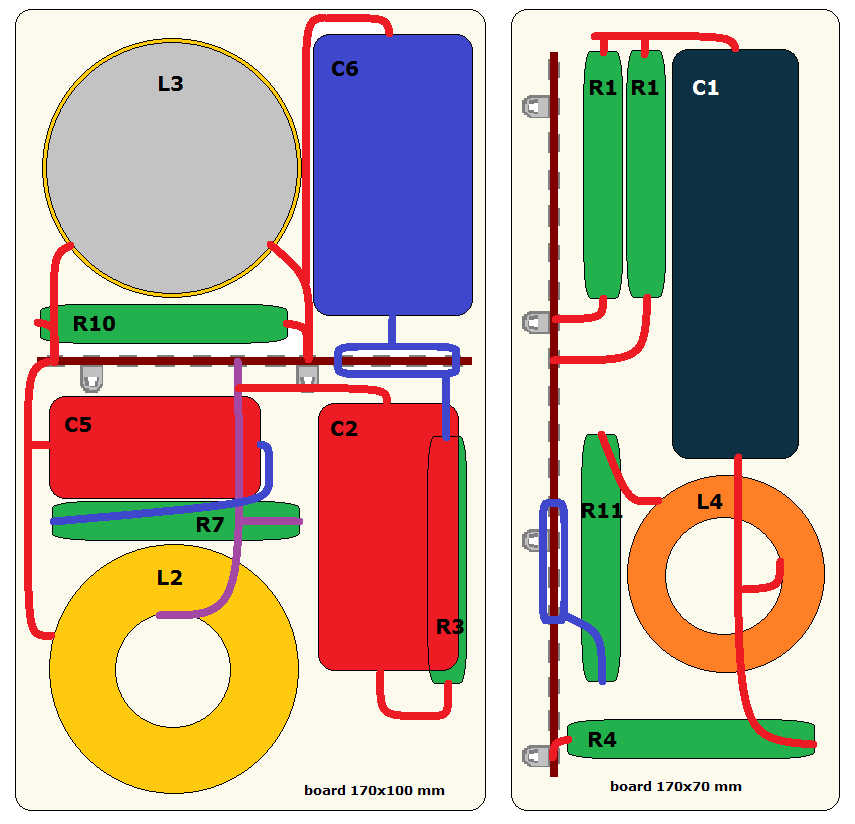
Speaker wiring:
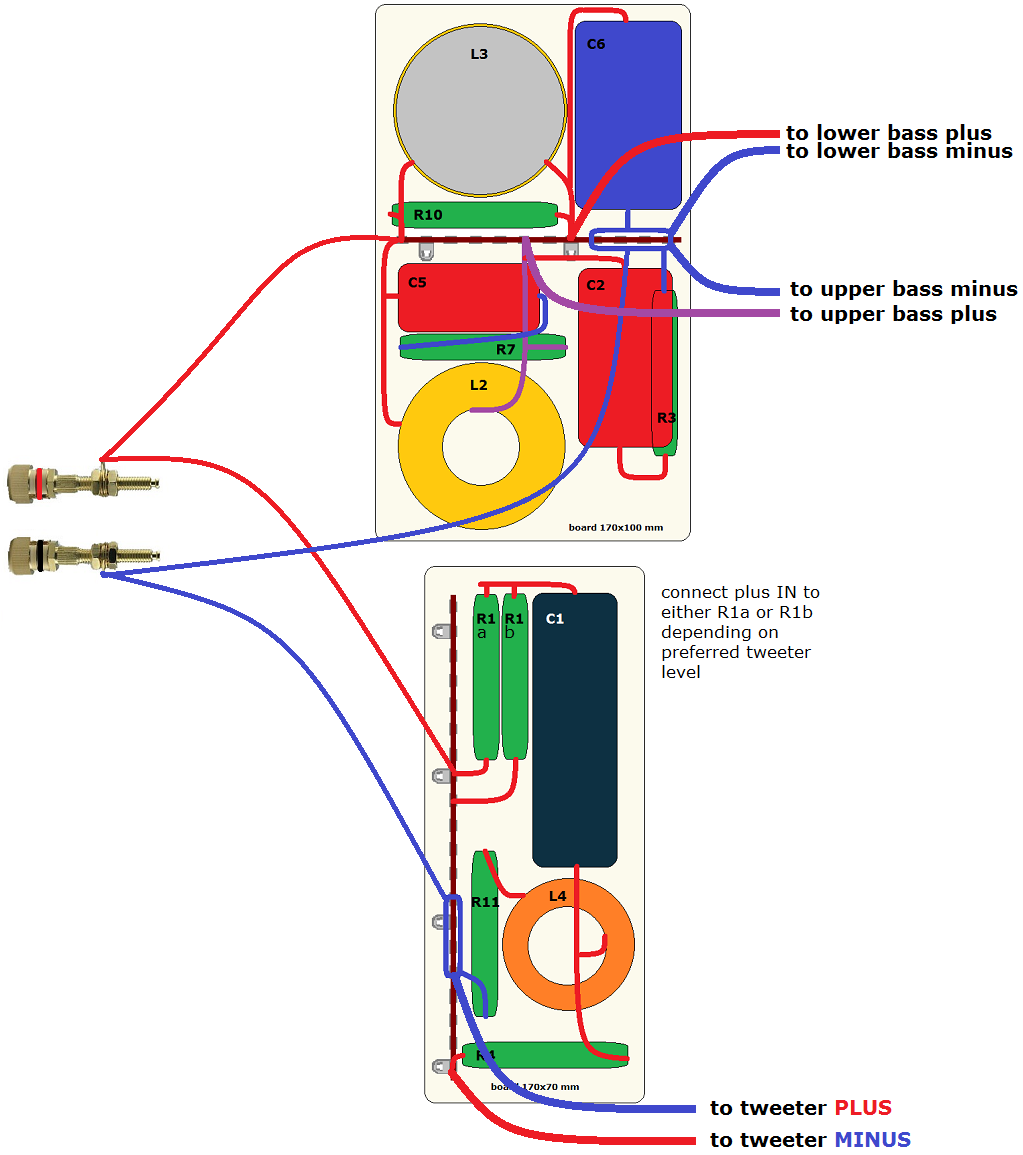
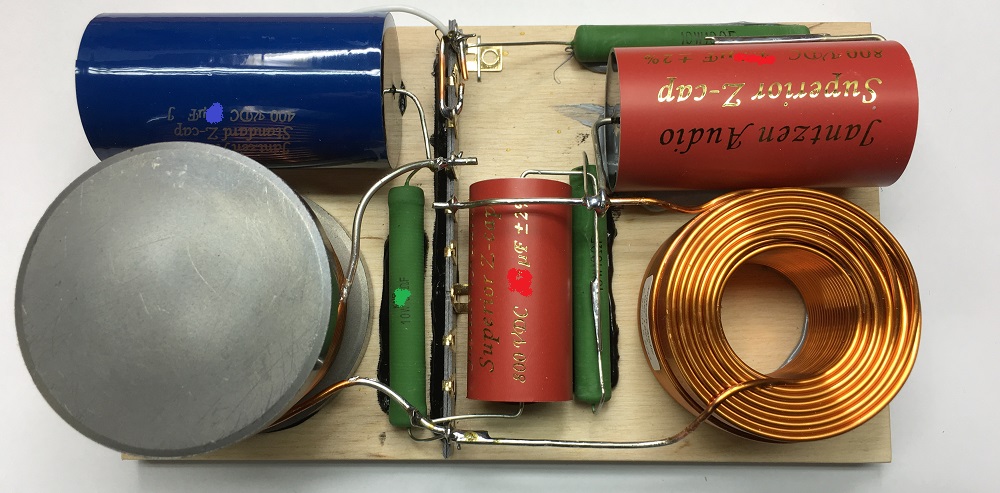
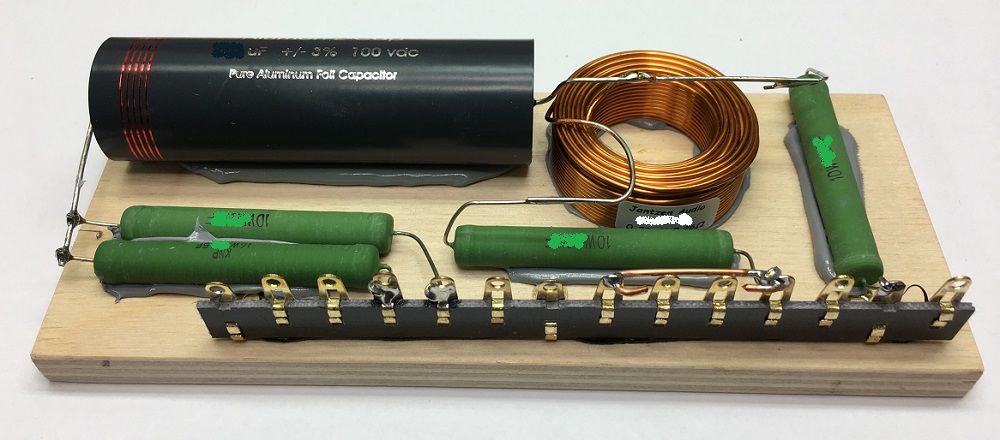
Level 1 crossover.
